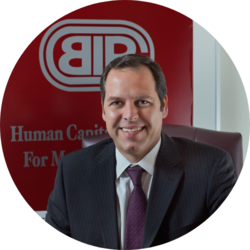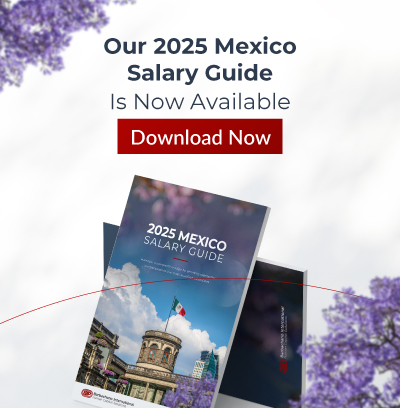
Every organization wants to improve retention. But in too many boardrooms, it’s still viewed as an HR function instead of what it is: a leadership outcome.
Consider this: a recent McKinsey report found that the top reasons employees leave jobs are tied to how they’re treated by their managers, not compensation. That aligns with what we hear every week. People don’t just leave jobs. They leave bad managers. They leave cultures where their ideas are dismissed. They leave environments where growth is blocked, credit is hoarded, and trust is thin.
In contrast, when we speak to candidates who choose to stay in their roles, even in competitive markets, they point to something else entirely: strong, values-driven leadership. When leaders create an environment where people feel respected, empowered, and included, it shows. Retention isn’t the goal: it becomes the byproduct.
The Leadership Factor in Retention
The most effective retention strategies start long before HR rolls out an initiative. They begin with the example leaders set every day in meetings, during conflict, through recognition, and even in silence.
Leaders who retain top talent tend to have a few things in common:
- They communicate clearly and consistently
- They recognize people’s efforts in real time
- They make space for upward feedback
- They align business goals with employee purpose
The leaders who get this right don’t wait for performance reviews to give feedback. They don’t delegate all people-related matters to HR. And they don’t see talent as a cost; they see it as their most strategic asset.
It’s not about charisma or micromanagement. It’s about creating an environment where high performers can thrive and feel seen while doing it.
Culture Isn’t Perks. It’s Behavior.
There’s a misconception that culture is about what a company offers employees: remote work, Fridays off, bonuses, pizza days. Those are incentives. Culture is what a company tolerates and models from the top down.
If leadership tolerates favoritism, that becomes the culture. If leadership models transparency, that becomes the standard. Culture is built less on statements and more on actions, especially actions taken under pressure.
One of our clients, a mid-sized manufacturer in the consumer goods sector, was facing rising turnover among their line supervisors and skilled technicians, despite offering competitive salaries and benefits. After a closer look, it became clear that the issue wasn’t compensation. It was an inconsistency. Site leaders varied wildly in how they treated people. Some built strong, motivated teams. Others were ruled by pressure. The retention problem wasn’t policy. It was uneven leadership.
The company didn’t fix it with a retention bonus. They fixed it by investing in leadership development, realigning expectations, and holding managers accountable to the same behavioral standards. Within a year, turnover in the most critical roles dropped by 40%. More importantly, employee engagement scores began to rise across all sites, setting the stage for long-term performance improvements.
Leadership Visibility Matters
In Mexico, the U.S., and across Latin America, we’ve seen a clear trend: employees are more loyal to leaders they know.
That doesn’t mean being best friends with the team. But visibility builds credibility. Leaders who make time to check in, explain the why behind decisions, and take questions directly, even the uncomfortable one, tend to retain people longer.
Visibility is especially important during times of transition. Mergers, layoffs, and strategy shifts are the moments when people look to leadership the most. A visible leader brings clarity, steadies nerves, and builds confidence in the path forward.
This is especially true in cross-border organizations or growing mid-sized companies. As teams expand, visibility becomes harder. But the best leaders adapt. They show up. They listen. And they don’t hide behind hierarchy. That presence can be the difference between a team that stays engaged and one that quietly disengages.
Clarity Over Certainty
One mistake we see often is leaders waiting to communicate until they have all the answers. But high performers don’t need certainty. They need clarity. They want to understand where the company is headed, how their work fits in, and what’s expected.
Uncertainty is part of business. What people can’t tolerate is being left in the dark.
The most respected leaders are the ones who share updates early, admit what they don’t know, and bring people into the process. That kind of transparency builds trust, and trust builds retention.
We’ve also seen that clarity helps reduce burnout. When people know what matters most, they can focus their efforts. When they’re unclear, they overcompensate, second-guess themselves, and eventually disconnect. A steady stream of honest communication does more than manage morale; it protects performance.
Where Retention Starts
At Barbachano International, we’ve helped organizations across North America strengthen their leadership pipelines to support long-term growth and retention. For example, we recently partnered with a multinational electronics firm to help them identify and onboard a bilingual COO with strong people leadership credentials. In less than six months, the company reported a measurable boost in engagement scores and a decline in regrettable attrition.
We’ve seen the difference it makes when the right executive is in place: morale improves, turnover slows, and engagement grows organically. And not just among direct reports; strong leadership often inspires ripple effects across peer functions and departments.
It’s tempting to focus on quick fixes: a new HR platform, a one-time bonus, a branding campaign. But the truth is, none of that matters if the leadership experience is broken.
Retention starts at the top. The best leaders get that right, and their people stay not because they have to, but because they want to.

By Fernando Ortiz-Barbachano
President & CEO of Barbachano International
Barbachano International (BIP) is the premier executive search and leadership advisory firm in the Americas with a focus on diversity & multicultural target markets. Since 1992, BIP and its affiliates have impacted the profitability of over 50% of Fortune 500 Companies. BIP has been recognized by Forbes as Americas’ Best Executive Search Firms and currently ranks #8 and #3 on the West Coast.

